24 Old Photos of Famous American Landmarks Under Construction
People travel the world to see landmarks that take our breath away, whether it is the Effiel Tower in Paris, the Colosseum in Rome or the Taj Mahal in India and so much more that make this world special. Yet, you would be surprised how many truly historic landmarks you can find in our own country. Just travel across the United States and you will see buildings, statues, bridges, etc. that people travel from all over the world to see because of their uniqueness. The funny thing the people who built most of the landmarks on this list probably didn’t know they were going to become so iconic years later. Let’s take a look back on these monuments before they became something special in America’s hearts.
1. Brooklyn Bridge, 1874
It is the bridge that completes New York City’s skyline and has been connecting Manhattan and Brooklyn since 1883. The construction of the iconic bridge began in 1869, following the design of the German immigrant John Augustus Roebling, but, unfortunately, he never got to see how his project would turn out because he died shortly after from a tetanus infection. His son, Washington Roebling, took over his father’s project and saw it through.
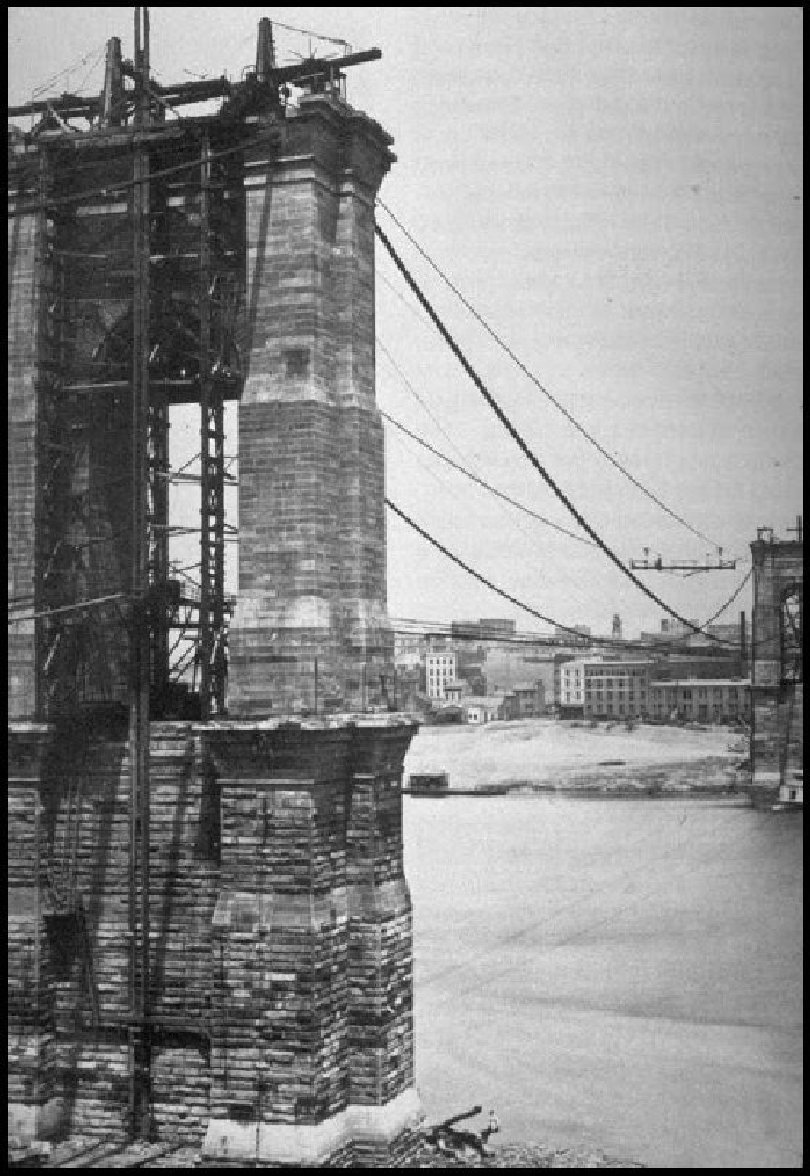
It took 14 years for the Brooklyn Bridge to be complete and Roebling’s wife Emily was the first to cross the bridge!
2. World’s Fair Ferris Wheel, 1904
Also known as the Chicago Wheel, it was the first ever Ferris wheel the world saw and was certainly a site at the World’s Columbian Exposition in Chicago. The name of the amusement ride came from the engineer who built it, George Washington Gale Ferris and his wheel had a height of 264 feet. The reasoning behind building this enormous attraction was to beat the last World’s Fair’s attraction, the Eiffel Tower in the 1889 Paris Exposition.

After the fair was over, the Ferris Wheel ended up being dismantled 3 times before, eventually, in 1906, it was gone for good. Its legacy, though, is seen all over the world in amusement parks and carnivals!
3. Chrysler Building, 1929
For 11 months after the Chrysler Building in New York City was built in 1930, it was the world’s tallest building until the Empire State Building surpassed it by 204 feet. It still went down in history as the first man-made structure taller than 1,000 feet and is currently still the tallest brick building. The purpose of the skyscraper was to be the headquarters for the Chrysler corporation but since Walter P. Chrysler paid for it himself, only he owned it, rather than the company.
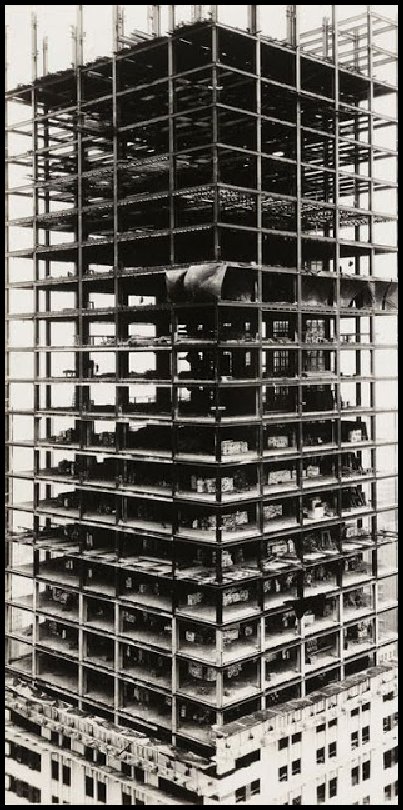
The architect, William Van Alen, was very impressed with his completed work but was upset with Chrysler for not paying the balance of his architectural fee.
4. Disneyland, 1954
All our dreams came true in 1955 when Walt Disney opened up Disneyland Park in California. The entrepreneur came up with the idea after visiting Griffin Park with his wife and 2 daughters. While watching them on the merry go round, he thought how wonderful it would be to build a place where adults and kids can have fun together. It was orignally going to be called the Mickey Mouse Park and be a small place next to his studio for vistors to hang out in.
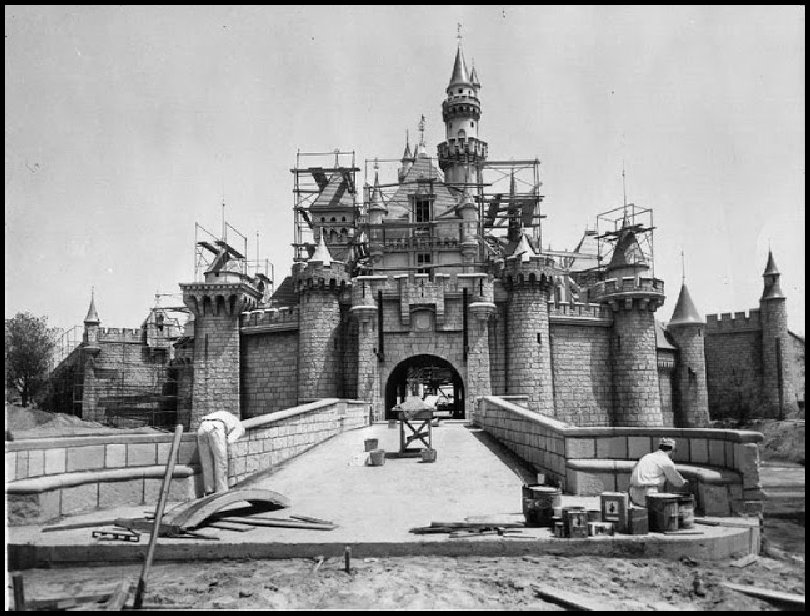
On opening day on July 17th, 1955, Walt Disney said in his dedication speech, “To all who come to this happy place: Welcome. Disneyland is your land. Here age relives fond memories of the past, and here youth may savor the challenge and promise of the future. Disneyland is dedicated to the ideals, the dreams, and the hard facts that have created America, with the hope that it will be a source of joy and inspiration to all the world.”
5. George Washington on Mount Rushmore, 1940
The South Dakota historian Doane Robinson was said to have come up with the idea of carving faces into the Black Hills to promote tourism because I guess nothing encourages people to come visit than 4 giant heads. He, though, wanted the heads to be of western heroes but the sculptor, Gutzon Borglum, said it would be better to make them presidents to give it a more national focus. The original design was to have the presidents sculpted from head to waist but due to lack of funding they had to stop after the heads were complete.

It took 14 years to complete the monument and surprisingly, considering how dangerous it was, there were no fatalities!
6. Hangar One at NASA Sunnyvale, California, 1931 – 1934
It is one of the world’s largest freestanding structures and is still one of the most recognizable landmarks of California’s Silicon Valley. It covers 8 acres and was originally a naval airship hangar for the USS Macon. The designer was Dr. Karl Arnstein, who was the Vice President and Director of Engineering for the Goodyear-Zeppelin Corporation. The reason for the clam shell doors was to reduce turbulence as the Macon came in and out.

Hangar One is so large on the inside that fog sometimes forms in the ceiling!
7. Lincoln Memorial, 1914-1922
In 1865, our 16th president was assassinated and since then, there had been plans to give him a national memorial, which finally came in 1914. The original statue was only supposed to be 10 feet tall but in the end, they decided to make it 9 feet bigger and if he stood up, he would be 28 feet tall! Henry Bacon was the architect, Daniel Chester French was the designer and the statue was sculpted by the Piccirilli Brothers.
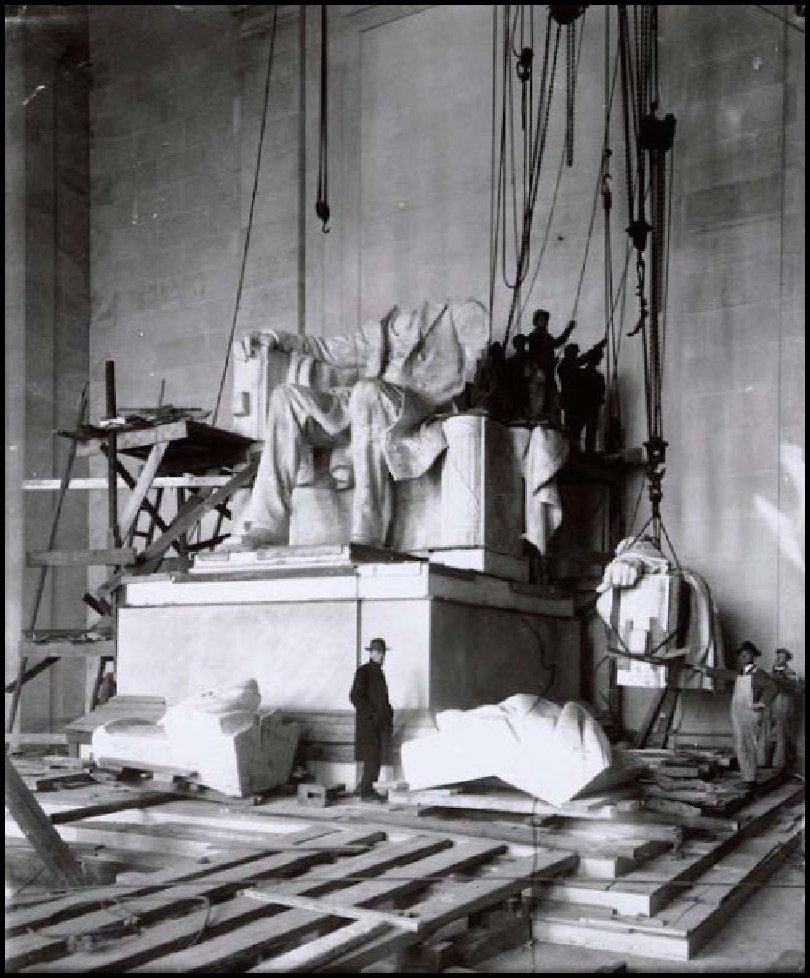
There is a myth that Lincoln was spelling out his initials in sign language, as his left-hand looks like the letter A and his right, the letter L.
8. Manhattan Bridge, 1900s
The Brooklyn Bridge wasn’t the only iconic bridge in New York City. The Manhattan bridge became a model for future suspension bridges since it was the first one to use Josef Melan’s deflection theory for the stiffening of its deck and also, a Warren truss in its design. The bridge itself was completed in 1909 but a year later, its arch and colonnade were added after the architectural firm Carrère and Hastings wanted to give it a beautiful entry, as part of the “City Beautiful” movement.
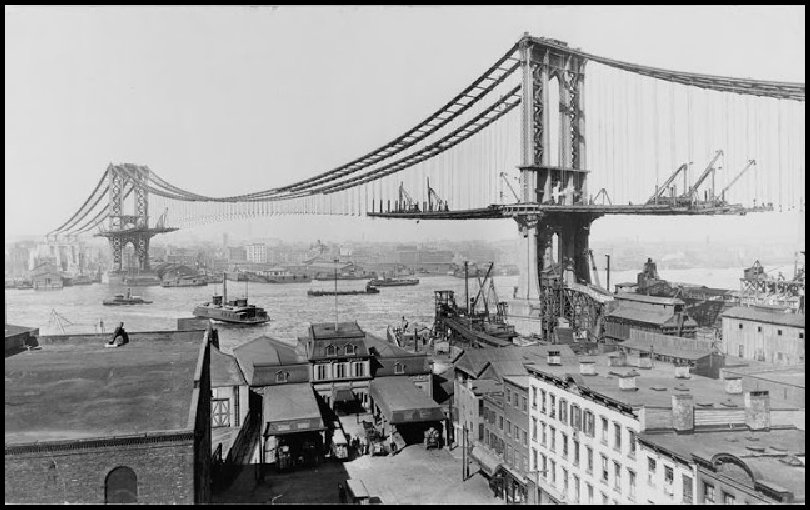
While the arch and colonnade were designated a New York City landmark, the bridge itself was not!
9. Space Needle, 1960s
The World’s Fair is certainly a time for landmarks to make history! For the 1962 World’s Fair in Seattle, the mesmerizing Space Needle was constructed and, at the time, was the tallest structure west of the Mississippi River. The chairman of the World’s Fair, Edward E. Carlson, came up with the idea of building a tower with a restaurant up top and was inspired by the Stuttgart Tower of Germany. In the original poster featuring the Space Needle, it shows a beam of light coming out of it but that wasn’t actually installed until 1999.
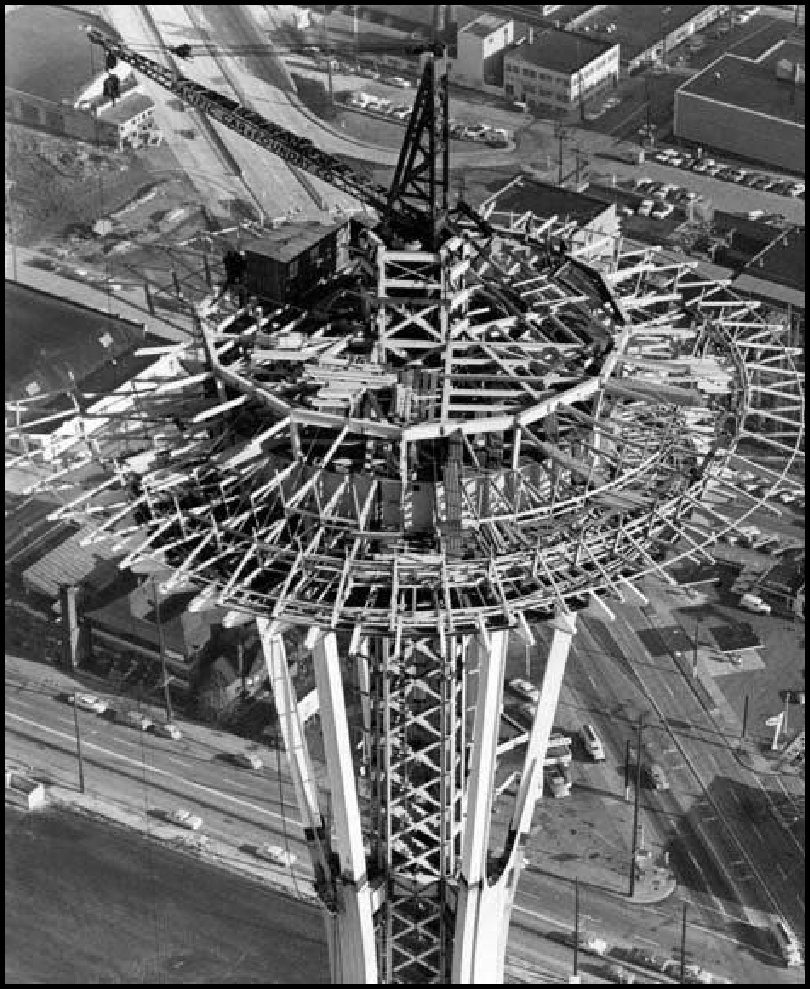
The monument used to have 2 restaurants up top but now has one larger restaurant called SkyCity, which rotates 360 degrees every 47 minutes!
10. Dodger Stadium, 1960
Built in 1962 and home to the LA Dodgers, the stadium is the 3rd oldest MLB ballpark and is the largest MLB stadium by seat capacity. When Walter O’Malley couldn’t find land to build a stadium for his Brooklyn Dodgers, he moved out west, where he found a place to house his team in Elysian Park. Since the LA Angels had to use this new stadium too and didn’t want to have to call it Dodger Stadium, they referred to it as Chavez Ravine Stadium until they got their own stadium in 1965.
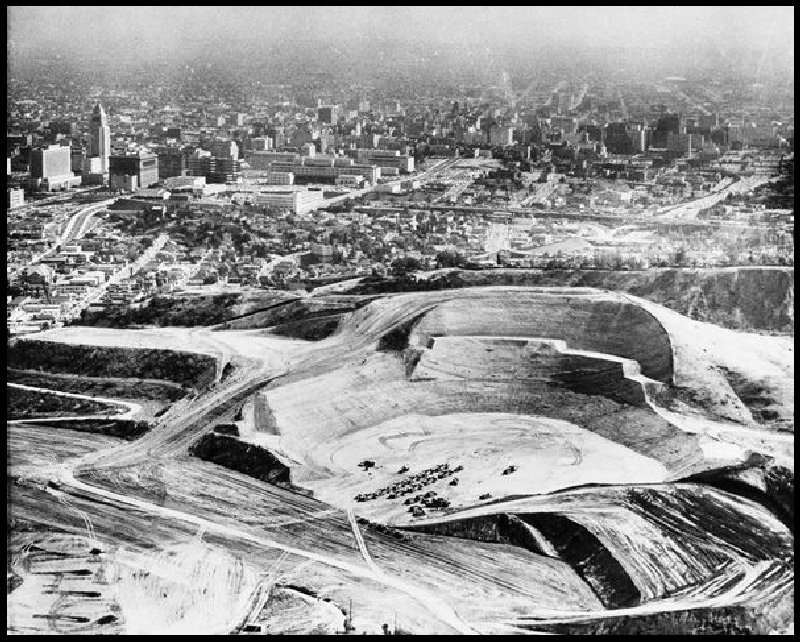
Since the original Yankees Stadium opened in 1923, Dodger stadium became the first MLB ballpark to be built using 100% private financing!
11. Empire State Building, 1929-1931
The Empire State Building has been a symbol of New York City since it surpassed the Chrysler building and became the world’s tallest building until the Twin Towers were built in 1970’s. After the 9/11 attacks, the building went back to being #1 in NYC until the One World Trade Center exceeded it in 2012. William F. Lamb, who worked for the architectural firm Shreve, Lamb, and Harmon, came up with the design for the office building in 2 weeks and it only took 13 months to complete the Empire State Building!

It is amusing to note that the staff at the Empire State Building send a father’s day card to the Reynolds Building in Winston-Salem since the designer used his previous designs for that building when coming up with this one!
12. Flatiron, 1902
One of NYC’s most unusual buildings, the Flatiron is like no other skyscraper in the city with its triangular shape. The building brought a bit of Chicago to the popular city as the Chicago native designer, Daniel Burnham made the vertical Renaissance palazzo resemble the Chicago Schools style. The owner of the building was the Fuller Company and they wanted it to be named after their founder, George A. Fuller but people kept referring to it as the Flatiron. Eventually the name became official!

The neighborhood around the iconic building became known as the Flatiron district.
13. Golden Gate Bridge, 1935-1937
One of the most recognizable bridges in the world and certainly one of the most photographed ones is The Golden Gate Bridge. Before it was completed in 1937, the only way for people to get from San Francisc0 to Marin County was by boat and since 1820, there was a ferry service to take people across. The ferry service became known as the Golden Gate Ferry Company and was very profitable until the bridge was installed. It took about 20 minutes to make the trip and cost $1 per vehicle, which became cheaper in 1937 after people chose to use the new bridge.
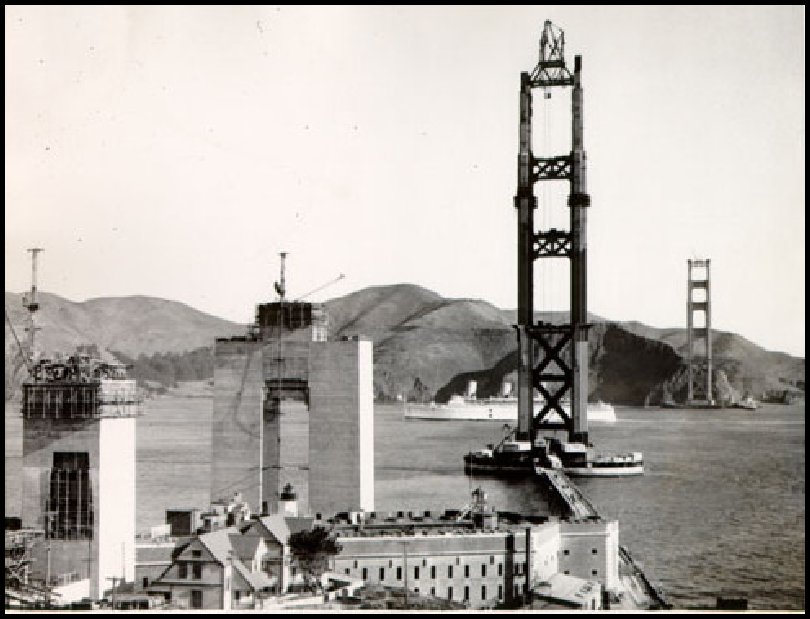
If there is a name you should know associated with the Golden Gate Bridge, it should be its famed engineer and designer, Joseph Strauss!
14. Hollywood Sign, 1923
It is so simplistic, yet so iconic, the Hollywood sign has been standing tall on Mount Lee for 93 years. It wasn’t originally supposed to be a landmark but was rather an advertisement for a new housing development that read, HOLLYWOODLAND. Thomas Fisk Golf designed the sign for the real estate developers Woodruff and Shoults and it cost $21,000 to do so. Since it was an ad, it was only supposed to be up for less than a year but it began to be viewed as a symbol of Los Angeles, especially the American cinema.

Considering the sign wasn’t supposed to last very long, it eventually began to deteriorate and the Hollywood Chamber of Commerce chose to restore it in 1949 and again in 1978.
15. Los Angeles City Hall, 1927
Los Angeles City Hall building is the tallest base-isolated structure and was built in 1928. It is the house of the mayor’s office and has 32 floors that are each 454 feet high. The tower was made of concrete that came from each of California’s 58 counties and its shape was based on the Mausoleum of Mausolus. Starting in 1940, the LAPD used the city hall as a symbol on their badges!
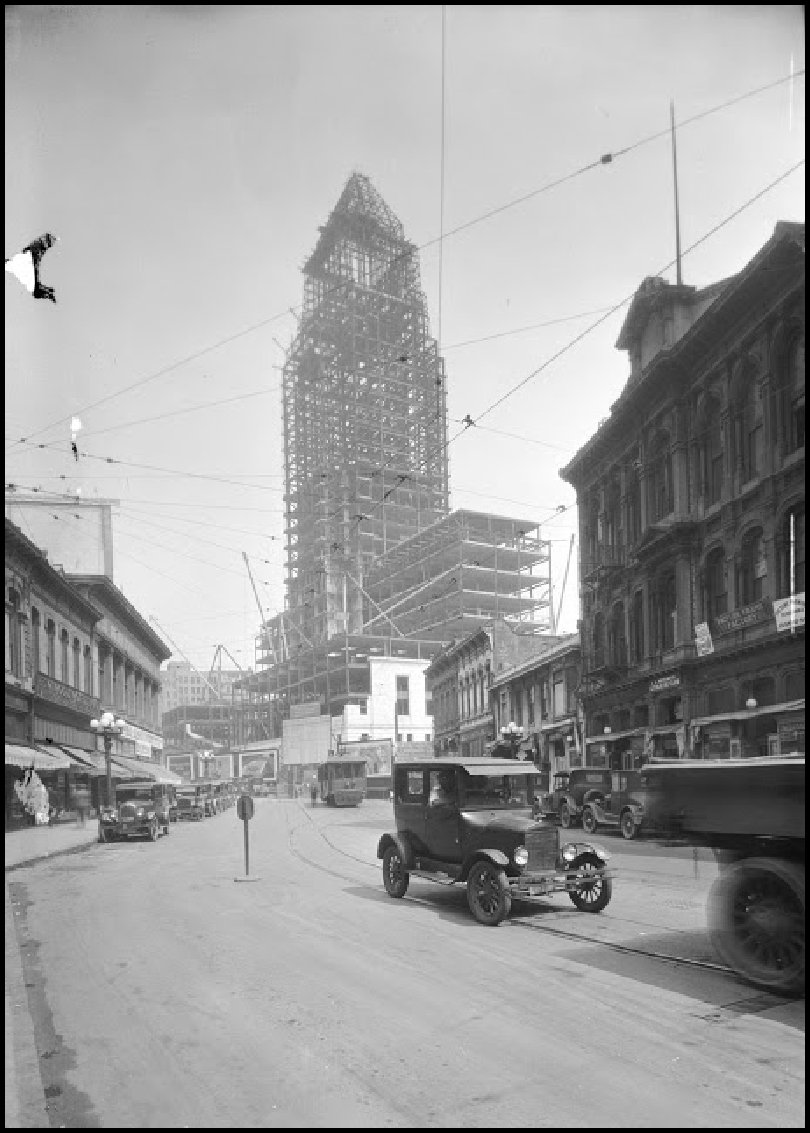
Considering LA is prone to earthquakes, in 1998, the City Hall had a seismic retrofit done so that in the event of a magnitude 8.2 earthquake, it would receive little damage.
16. Penn Station, 1908
Penn Station is the main intercity railroad station in New York City, benefitting more than 600,000 commuter rail and Amtrak passengers each day. While this station shares the name for many across the U.S., this particular Penn Station was named after the Pennsylvania Railroad (PRR), who was in charge of building it. The original station was completed in 1910 and was inspired by Paris’ station, Gare d’Orsay with its marble/granite station house and train shed.
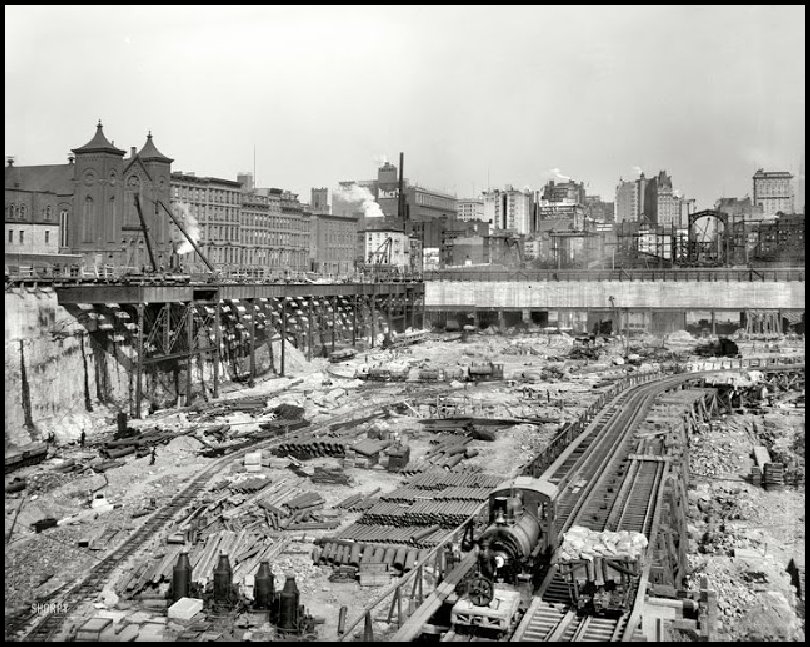
In the 1950’s, less and less people used the train station, which led to the decision to demolish Penn Station and rebuild a completely new one, which was finished in 1969.
17. Rockefeller Center, 1932
While the famous building has many names, including the Comcast Building, the RCA Building, the GE Building, but it is mainly referred to as Rockefeller Center. The architect Raymond Hood completed it in 1939 after 9 years of construction and is 70 floors high, 872 feet tall. Besides housing the famous Rainbow Room restaurant, the skyscraper is the headquarters of NBC and most of the network’s New York TV studios.
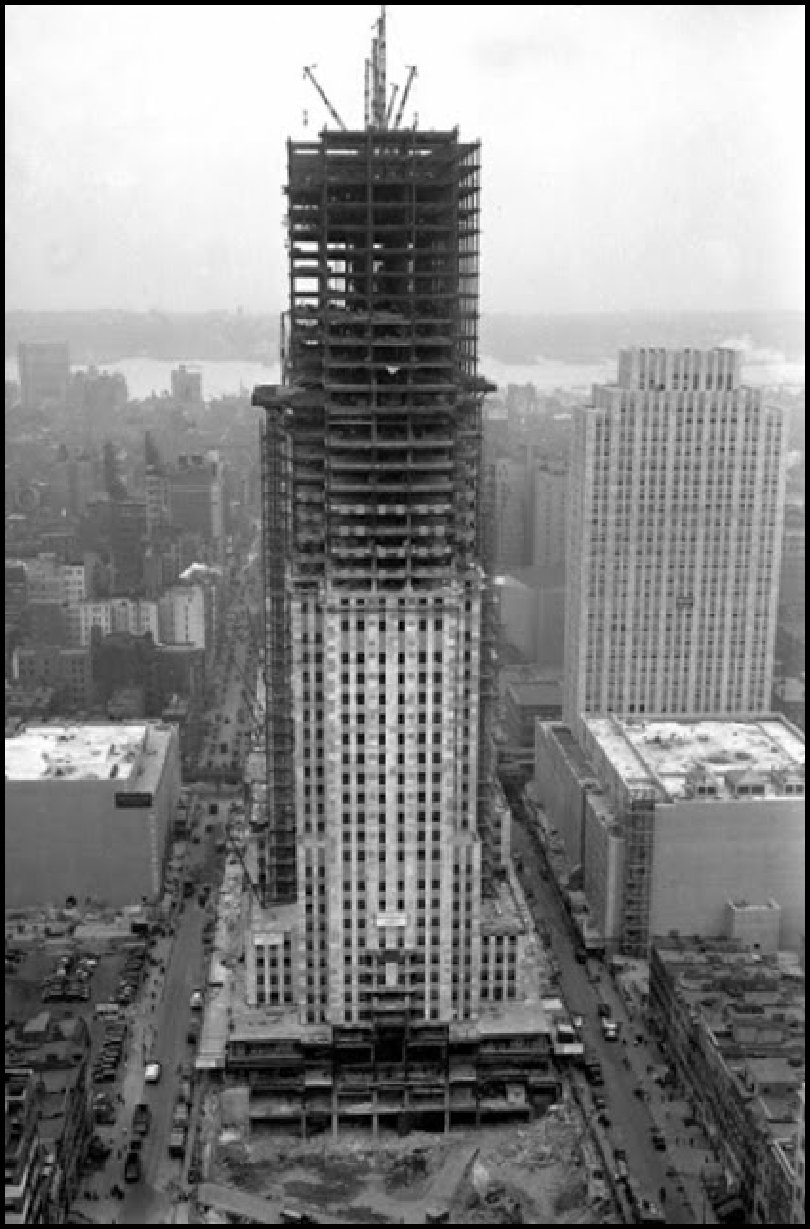
You know that famous photo taken by Charles C. Ebbets of construction photos eating their lunch atop a skyscraper (crossbeam)? Well, they were actually working on the 30 Rockefeller Center building!
18. St. Patrick’s Cathedral, 1868
In 1853, Archbishop John Joseph Hughes wanted to build a new St. Patrick’s Cathedral to replace the old one that was in downtown Manhattan. The new one would have a Gothic Revival style and built by James Renwick, Jr in the then not so popular midtown Manhattan. Construction began in 1858 but had to stop during the Civil War. Eventually, it was completed 20 years later but much more would be added toit in years to come, including the archbishop’s house, a school, and the spires, among others.

Between 1927 and 1931, the cathedral was renovated, where the sanctuary was enlarged and a great organ was installed.
19. The San Francisco-Oakland Bay Bridge, 1935
Around the same time as the Golden Gate Bridge construction, the San Francisco-Oakland Bay Bridge was erected. It is one of the longest spans in the U.S. and is made up of a complex of bridges. It was created as a pathway between San Francisco and Oakland and is still the direct road between the two cities. Now it is part of interstate 80 and has two sections. The bottom section was originally made for trucks and trains but was eventually after it stopped supporting trains, it was made for all traffic.
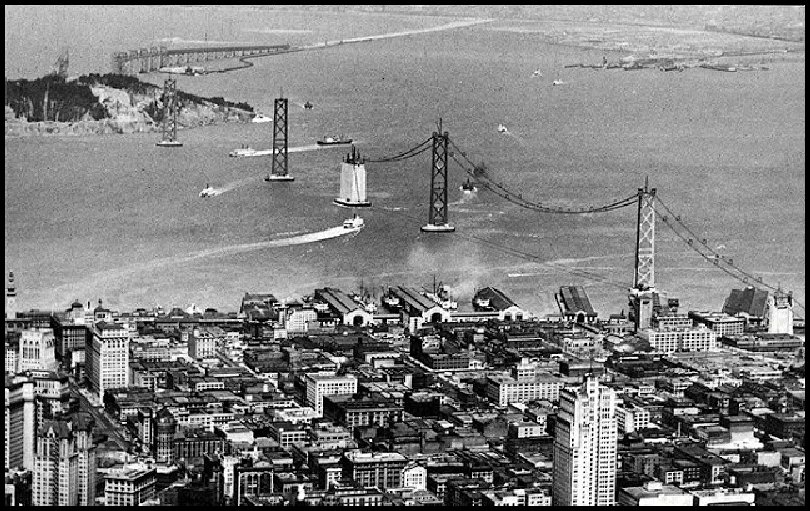
In 2014, the Guiness World Records stated that the bridge was the widest in the world!
20. The Tribune Tower, 1924
The Chicago Tribune certainly has one cool and historic headquarters building! The Tribune Tower was built in 1925 as a replaced to the old 1800’s building that was destroyed in the 1871 Great Chicago Fire. It is part of the Michigan–Wacker Historic District and is a designated landmark of the city. The newspaper found its architects by having an international interior and exterior design competition for “the most beautiful and distinctive office building in the world.” More than 260 entries were received and John Mead Howells and Raymond Hood won with their neo-gothic design.

In the lower levels of the building, there is a famous wall of building fragments from around the world, including from the World Trade Center and Taj Mahal.
21. The U.S. Capitol building, 1860
If you have learned anything about the government, you’d know that the U.S. Capitol Building in Washington D.C. is the seat of the United States Congress. Like the other principal buildings, Capitol Hill was constructed using a distinctive neoclassical style and, of course, with a white exterior. The building itself was done in 1800 but the dome was added later.
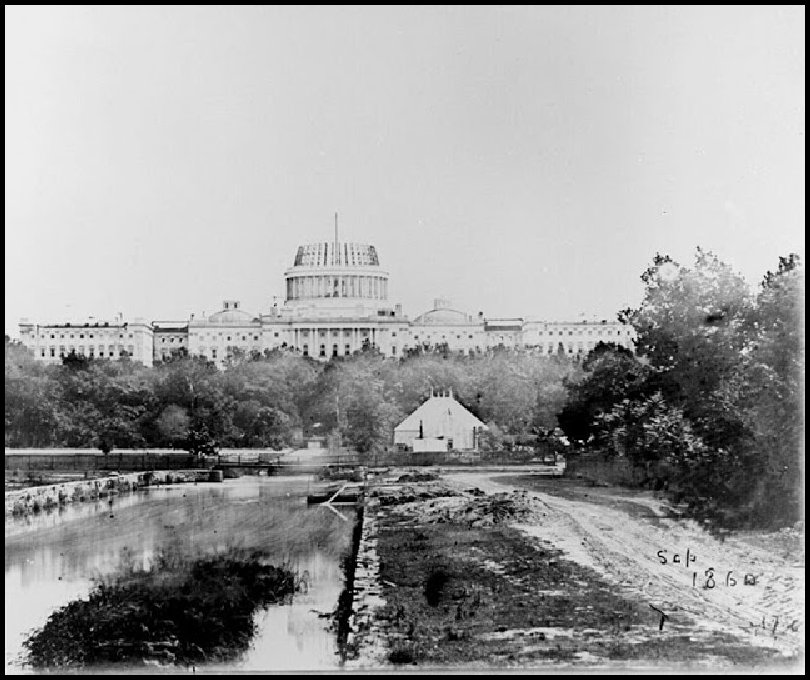
Right now, there is scaffolding around the dome as it takes part in a restoration project that started in 2014 and should be done in 2017.
22. Times Building, 1904
Times Square is a very famous location in New York City that millions of tourists flock to every year, especially for New Year’s Eve. Before it became Times Square, though, it was known as Longacre Square until the New York Times newspaper built its headquarters, the Times Building, hence the change of name. The company, however, didn’t stay at One Times Square for long, but even after they moved to 229 West 43rd Street, the “Crossroads of the World” was still referred to as Times Square considering the building was still a major focal point, especially with its New Year’s Eve ball atop!
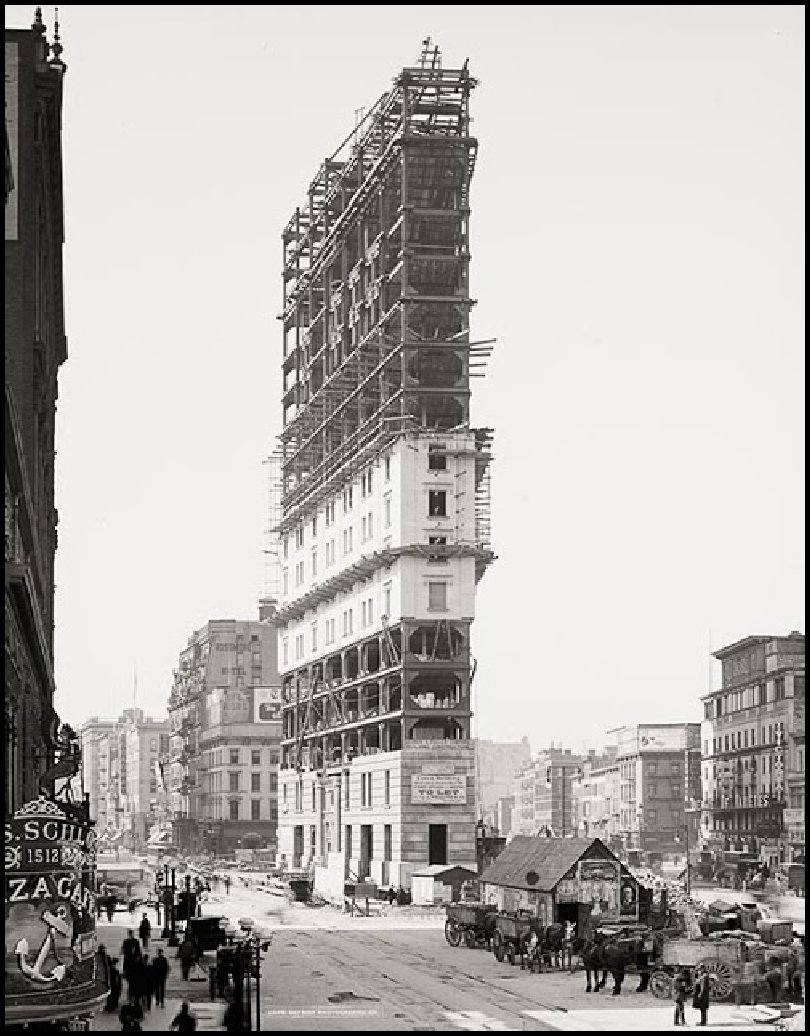
Now the building is mainly used for advertising purposes and is considered one of the most valuable advertising locations in the world.
23. United Nations Secretariat Building, 1949
As history dictates, the United Nations was formed in 1945 after World War II ended and its purpose was to prevent any high scale war from happening. It was decided that New York City would be its host city and the headquarters were built in 1952. The building was designed by Brazilian architect Oscar Niemeyer and was the first skyscraper in New York City to use a curtain wall. The UN also has offices in Geneva (Switzerland), Nairobi (Kenya) and Vienna (Austria), but the Manhattan building is the only one that houses the General Assembly and Security Council.
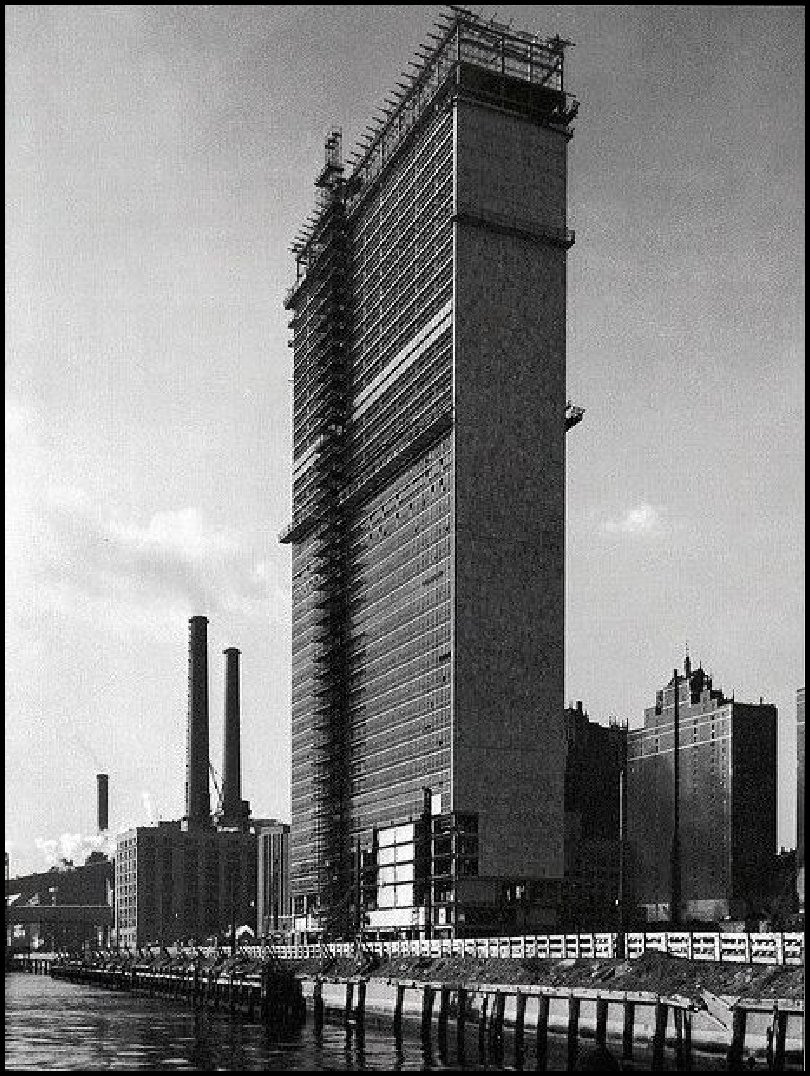
Since the building is owned by the UN, the building and property are under the sole administration of the United Nations, but they do acknowledge most U.S. local, state, and federal laws.
24. World Trade Center Towers, 1970
To encourage urban renewal in Lower Manhattan, David Rockefeller suggested building a world trade center there and in 1968, Port Authority began building the world’s first world trade center. There were 7 towers in total but it was the Twin Towers, which were the world’s tallest buildings until Chicago’s Sears Tower was built, that made the skyline iconic. Minoru Yamasaki was the lead architect and with the help of Emery Roth & Sons, he designed the World Trade Center and in 1987, it was finally all completed.

We have come a long way since the 9/11 attacks and although we will never forget, New York City proved that they could rebuild once again. The new World Trade Center includes 6 new skyscrapers, a memorial and museum to those killed in the attacks, and a transportation hub.